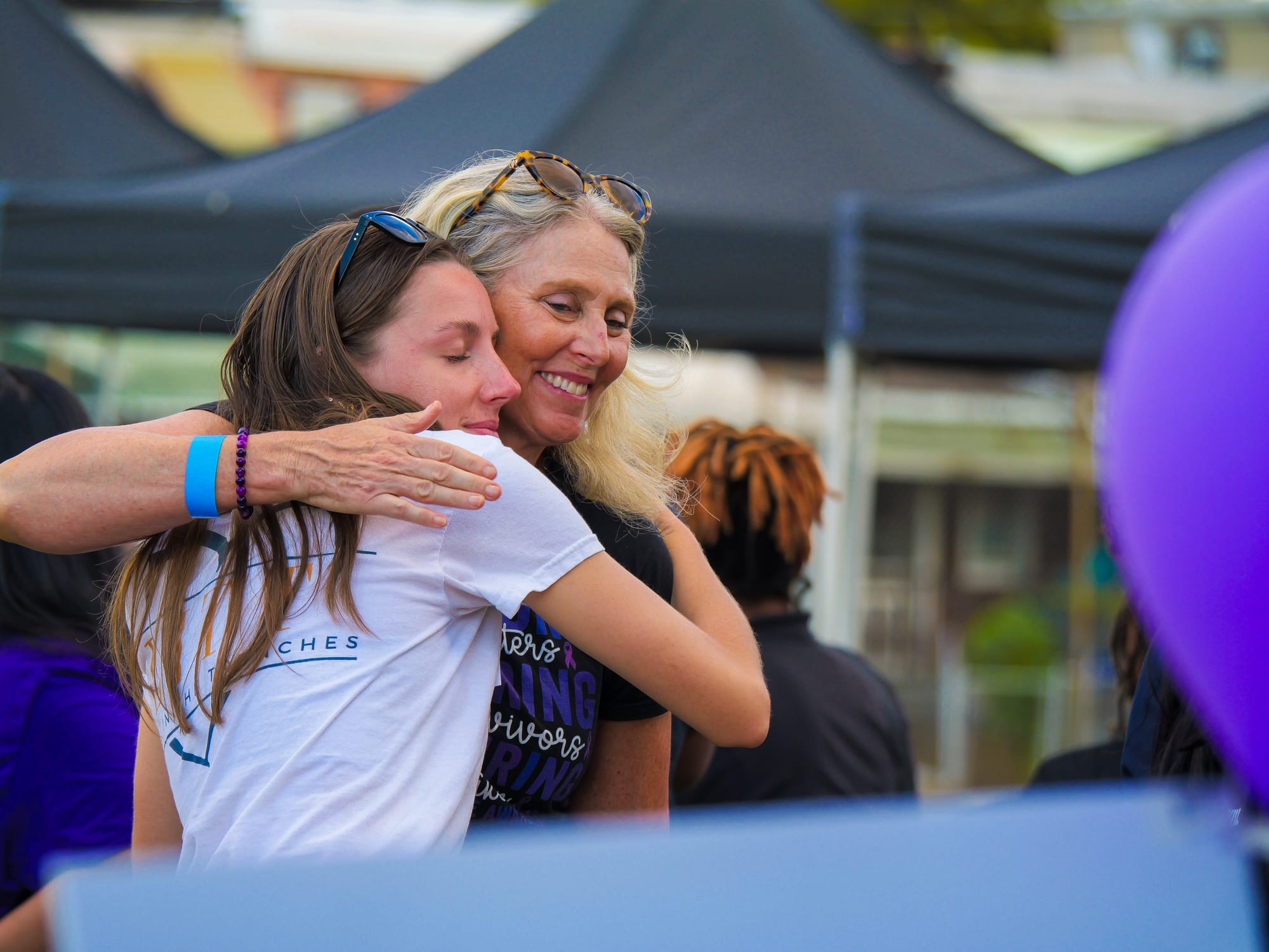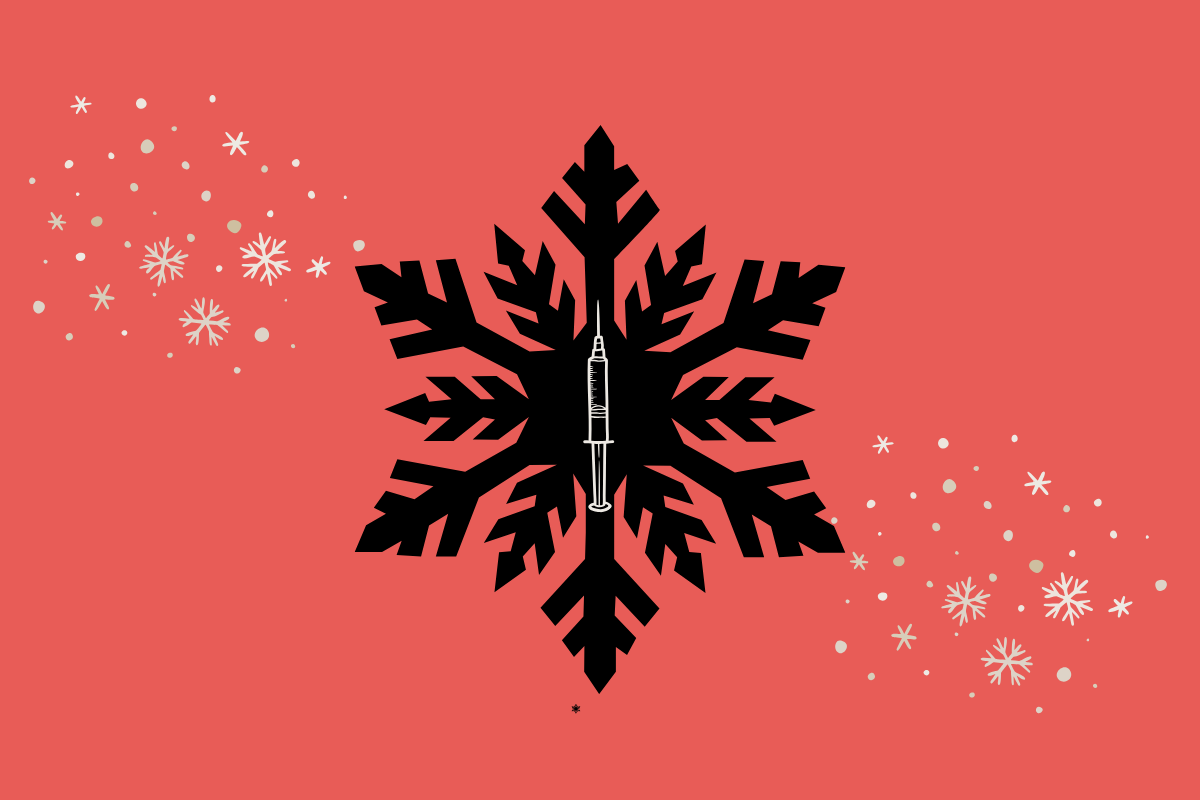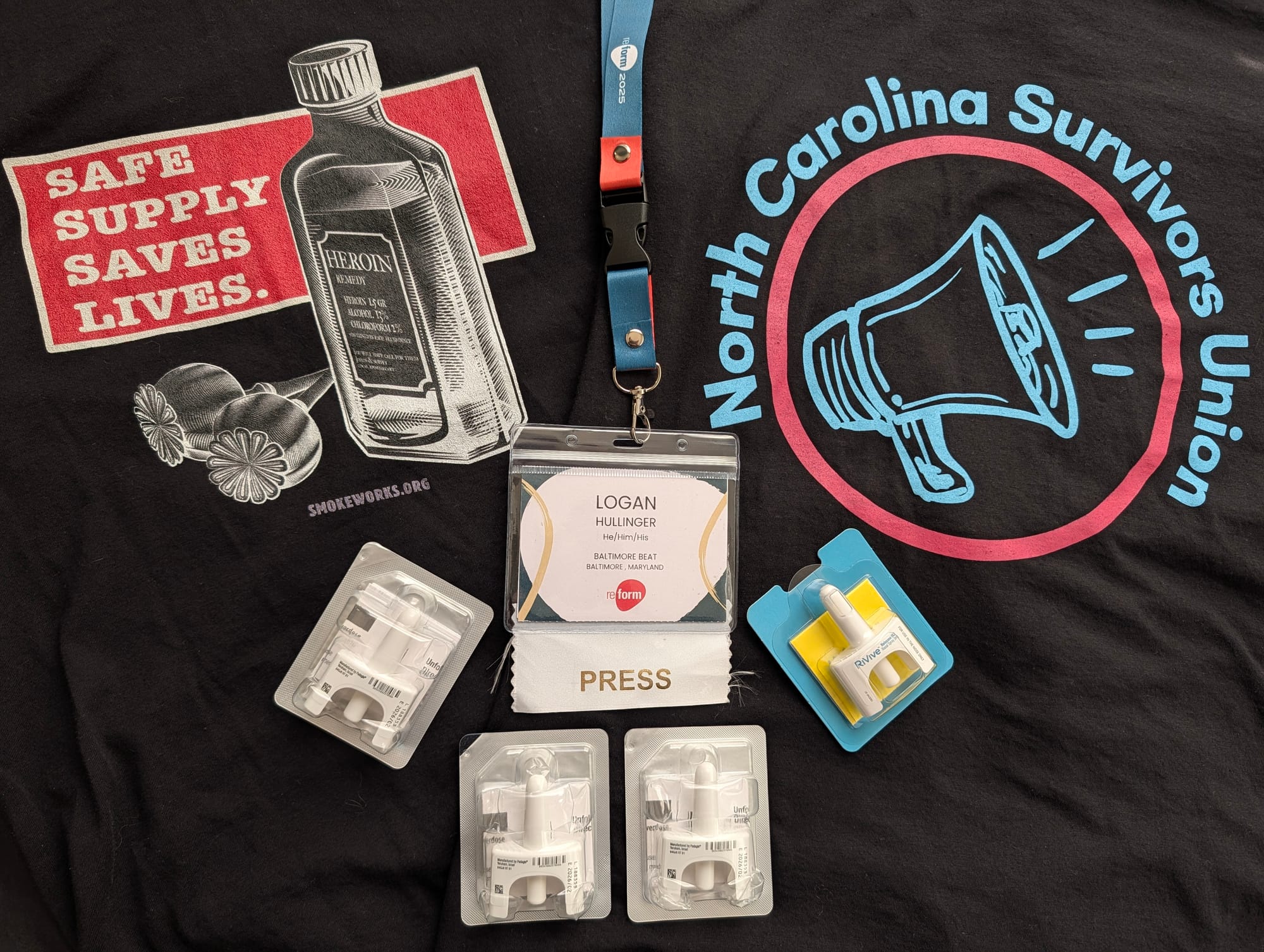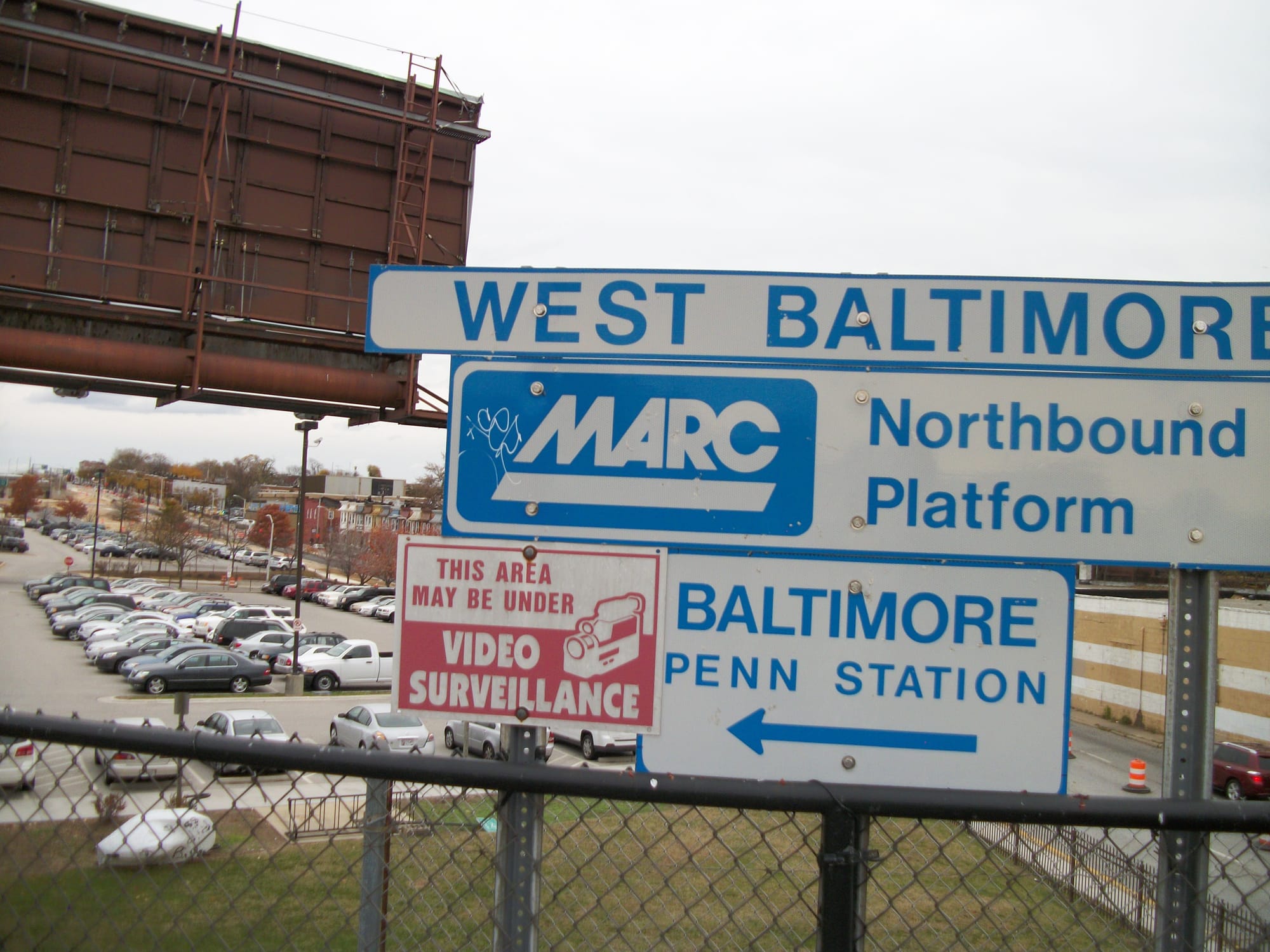
Tomorrow is International Overdose Awareness Day. Here in Baltimore, it's estimated that two people will die by midnight.
The city's fatal overdose rate has been on the decline, but it remains astronomically high. The crisis has hit Baltimore's low-income Black neighborhoods the hardest, impacting the same people who are most likely to be arrested and incarcerated for drug-related "crimes." These grim patterns have existed for decades, proving that both the public health catastrophe and the War on Drugs do, in fact, discriminate. But it doesn't have to be this way.
“I don’t know anyone who has been in Baltimore more than five years that doesn’t know someone who has been impacted by this crisis,” Mayor Brandon Scott said at the city's Overdose Awareness Day event in West Baltimore on Thursday.
“As we remember those we have lost, we will also make this a day of hope — hope that we can, and will, finally put an end to the overdose crisis.”
At the city's day of remembrance at ABC park, the anguish, in addition to the hope that we can finally end preventable overdoses, was palpable.
And, as someone who has overdosed multiple times and is now in abstinence-based recovery, I often see myself in the eyes of those who now sit in the crisis's crosshairs.
My lived experience has greatly influenced my writing and ideology, and it's difficult to remove myself from the stories I publish on this website and other publications. It's also grueling to attempt to control my anger when local media sensationalizes the crisis and perpetuates stigma, or when city officials continue to bankroll a police force that actively threatens the lives of those who use drugs through crackdowns and other drug-war tactics.
However, this isn't about me, and it's not about them. This is about those who are on the receiving end of it all.
It's about the 778 people who died preventable deaths in Baltimore last year. It's about the nearly 1,800 Maryland residents and 80,000 Americans who lost their lives that year while living in a country that claims to embody freedom while denying people basic human rights such as health care, housing and freedom from discrimination.
It's about the nearly 1.5 million people who have died in the last half-century in the U.S., and the millions more who died worldwide.
And don't forget, tomorrow is also about those who are using drugs as we speak in the face of an increasingly lethal, unpredictable drug supply — as well as the need to push back against local officials as they refuse to adopt more ambitious harm reduction initiatives and move away from a punitive approach to drug policy.
It's easy for me to pat myself on the back after writing an article exposing how the War on Drugs has decimated Black communities in Baltimore and highlighting efforts to redress the crisis, which was published in the Baltimore Beat in June. And it's easy for local officials to pat themselves on the back after expanding access to naloxone, a program announced Thursday.
Those may very well be laudable efforts to highlight the plights of drug users and take steps to treat them with more compassion. But that's not enough. Not even close.
“We cannot let people use and die alone,” said Sheila Vakharia, managing director of research and academic engagement at the Drug Policy Alliance, at an event at Red Emma’s on Wednesday.
“Our society wants to tell them their lives don’t matter. We need to show up for our friends, our loved ones and our family members, and tell them we care.”
It's undeniable that the severity of the overdose crisis necessitates a swift, powerful response. Based on decades of research, there are myriad commonsense, evidence-based approaches. Some may say policies such as decriminalization and overdose prevention centers are radical, but that's a relative term that divides rather than unites.
What's clear is this: Piecemeal proposals have no place in the current climate, and it's time we step up. Lives are at stake, and if we truly value them, we will do anything in our power to make change happen and prevent overdoses.
Criminalization, as multiple speakers noted on Thursday, is not part of that conversation.
"It is a struggle that impacts so many families," state Sen. Cory McCray said. "It is something that is deeply personal to me and to all of us, and this idea that we would criminalize this disease was so very wrong."
Yet wedged between a stand run by Bmore POWER and B'more for Healthy Babies sat representatives from the U.S. Drug Enforcement Agency, who warned of the "social media drug trafficking threat" and advertised the federal government's drug diversion program.
Not only was the agency's presence ironic, but it was also an embodiment of the city's refusal to drop its prohibitionist bent and put an end to police crackdowns, which have undoubtedly cost far more lives than they have saved.
If the city were serious about combating the crisis, it would wash its hands of connections with those arms of the state and push for decriminalization. It would fight for OPCs. And it would go above and beyond to fully fund harm reduction programs that provide sterile syringes, naloxone, wound kits, overdose prevention training, safe sex supplies and, more importantly, meaningful connections with individuals who are often dehumanized and left to rot.
That's money from restitution funds. It's money from the general fund. And that's money diverted from the bloated Baltimore Police Department budget.
If we truly care about those who use drugs, we will sign off on every policy, allocate every dollar and advocate at every opportunity for autonomy and public health to the best of our ability — and more.
Tomorrow is International Overdose Awareness Day, but every day should be a day that we provide those who use drugs the ability to exert their human right to live.

Last week's newsletter: "New data on Baltimore's OD crisis underscores the absurdity of local response"
It's been six weeks since a mass overdose event in Penn North prompted police raids and sensationalized media coverage, bringing Baltimore's overdose crisis — and drug war — back into the spotlight.
Yet new data from the Maryland Department of Health shows that the prevalence of what drove the overdoses may have been overblown in the midst of cop crackdowns, and fatal overdoses in the city continue to decline. As evidenced by the department's Rapid Analysis of Drugs program, the leading drug-testing initiative in the state, the potent benzodiazepine cited in reports was not only an outlier because of its rarity but also the sheer amount of it that was in the batch.
Read the full newsletter here.
Mobtown Redux's Overdose Data has been updated with the latest local, state and national data
Baltimore's overdose death toll in 2024 has increased to 778 — this is preliminary data that's subject to change as causes of death are determined. That marks a 25.4% decrease from the year prior.
In the 12-month period ending in June, Baltimore saw 563 deaths, a death rate of 96.1 per 100,000 people. Statewide, there were 1,338 deaths, a death rate of 21.7 per 100,000 people.
The data indicates that fatal overdoses continue to trend downward after years of climbing, though poor Black neighborhoods in West Baltimore continue to suffer the most.
Check out Mobtown Redux's Overdose Data Dashboard here.
Click here to learn more about harm reduction resources in the Baltimore area.
New York Times: "Cities Move Away From Strategies That Make Drug Use Safer"
As fentanyl propelled overdose deaths to ever more alarming numbers several years ago, public health officials throughout the United States stepped up a blunt, pragmatic response. Desperate to save lives, they tried making drug use safer.
To prevent life-threatening infections, more states authorized needle exchanges, where drug users could get sterile syringes as well as alcohol wipes, rubber ties and cookers. Dipsticks that test drugs for fentanyl were distributed to college campuses and music festivals. Millions of overdose reversal nasal sprays went to homeless encampments, schools, libraries and businesses. And in 2021, for the first time, the federal government dedicated funds to many of the tactics, collectively known as harm reduction
The strategy helped. By mid-2023, overdose deaths began dropping. Last year, there were an estimated 80,391 drug overdose deaths in the United States, down from 110,037 in 2023, according to provisional data from the Centers for Disease Control and Prevention.
Now, across the country, states and communities are turning away from harm reduction strategies.
Click here to read the full article.









Comments